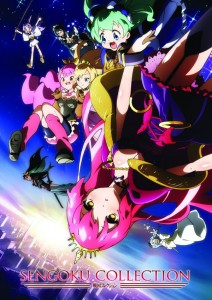 A different and almost artistic look at the Warring States generals.
A different and almost artistic look at the Warring States generals.
What They Say:
In a parallel world, Oda Nobunaga is a feisty girl locked in a massive struggle to dominate the land, but all that changes when a mysterious light sucks friend and foe alike into our world. Stranded in a strange land full of technological gadgetry, Nobunaga and the others are forced to adapt to survive, and some are finding it easier than others. Tokugawa Ieyasu is now… a cute pop idol? Uesugi Kenshin is… a voluptuous model?! Unlike the rest of her counterparts, Nobunaga is determined to escape from our world, so she sets out to collect the “Secret Treasures” – her only key to returning home.
The Review:
Audio:
The audio presentation for this release is pretty basic but serviceable as we get the original Japanese language track in stereo encoded at 192kbps. The series is one that’s really quite variable episode to episode with what it does as some are pretty much nearly all dialogue while others have a bit more action to it. A lot have a good blend of the two and the mix is one that works the forward soundstage pretty well. It’s not the most expansive mix or one that goes for detailed placement, but the way it works serves the material well as the dialogue has a good solid and clean feeling to it. Dialogue is well placed when needed and the encoding is clean and clear throughout without any dropouts or distortions during regular playback.
Video:
Originally airing in 2012, the transfer for this TV series is presented in its original aspect ratio of 1.78:! and is enhanced for anamorphic playback. The twenty-six episodes here are spread across five discs with five episodes to each and six on the fifth one. Animated by Brains Base, the show has a great look about it as it goes for a really good style in terms of the designs but also changes it up nicely across a lot of the stories to give it a more artistic feel to it where the colors vary and the designs have a lot more detail. The transfer captures most of this well, though obviously not to the same level as the high definition materials, but it’s largely a good looking presentation here. The main problem that I ran into was with several episodes across the set where there are some backgrounds where the noise gets to be a bit much and it stands out in a mildly distracting way. Because of the complexity of some of the backgrounds and the episodes per disc, it can do only so much.
Packaging:
The packaging for this release goes for the basic but it does it with a good bit of style that I really like. The release is done in a litebox form with all five discs inside across a couple of hinges that gives it a nice bit of heft. The front cover gives us a great piece of promotional artwork that was used early on with a lot of the girls falling from the sky towards the city with all sorts of expressions as they do so. With the city visible along the bottom, we get the sunrise across it as well which gives it a great bit of definition. The back cover gives us a little more character artwork in a clean form with a lot of pop and smooth design while also having a few fun shots from the show itself. The premise is covered well enough, as much as it can be really, and the technical grid covers everything cleanly and accurately.
Menu:
The menu design for this release may be a simple static piece, but it has some good style to it and works with some great artwork that gives it more life. The layout is simple where we get a dark blue sky with a lot of stars flickering across it and each disc brings in different groups of characters as the main piece of artwork across it. These all have a lot of appealing color to it all and the detail looks great, making it fun to see each volume load up to get a look at which piece is being used next. The navigation is kept along the left with a yellow box that’s easy to navigate while the logo is kept to the lower left corner. It’s a good design overall and definitely feels like the fresh show it is, which is a change of pace itself from most of the Lucky Penny/Nozomi titles that tend to hew a bit older.
Extras:
The only extras included in this release are the clean versions of the opening and closing sequences.
Content: (please note that content portions of a review may contain spoilers)
Over the years, there’s been a lot of series that delve into the Warring States period through a variety of different angles, often with characters from the present being thrown back into that time to survive. Sengoku Collection doesn’t want to do that though, but it starts briefly in that time period before it throws the lead character of a female Oda Nobunaga from that time into the present, where she falls from the sky and into the moving lap of a young man named Oota. Things move quickly and the two end up in a nice little cafe where she relates her story off camera before getting all up in his face about his inability to understand things. Of course, she uses some fun modern day sayings to get her point cross which is confusing at first but adds to the series quirky charm that I have to admit I felt within the first five minutes.
Unfortunately for Oota, he finds himself unable to shake himself free of Nobunaga as she’s decided that he’ll be her retainer and introduce her to this fascinating world that she’s now in. It’s filled with all sorts of wonders, though a few familiar things are there like rice balls, but mostly she’s just keen on the whole thing and wants to experience it. Considering the circumstances, she handles it well, including talking down a robber of the convenience store that Oota works in through some fun dialogue. With her ending up in his place, he gets to show her a lot of things but it’s all pretty tame and he even manages to tweak her a few times. He’s got to be convinced she’s just a bit crazy but he can’t seem to shake her loose and ends up with some cute situations that sometimes has some good cleavage shots entering the fray.
The opening episode kind of bounces around a lot (in fact, Oota doesn’t seem to be named within the episode at all) and we get a good bit of simple silliness here as Nobunaga experiences the world. Her time in Oota’s apartment is surprisingly fun and her enjoyment of various modern conveniences and foods definitely enamors her to the world. But she’s also keen on the world itself and shows her cute side when they hit the beach. Usually that’s a red flag for a series to do something like this in the first few episodes, never mind the first episode, but it’s kept pretty tame and worked to soften her image a little more, giving her a touch more girlish charm. While she has her origins as Nobunaga, she certainly doesn’t seem like the one known in this particular world and that plays up the parallel timeline thing from the series title pretty well.
What Nobunaga ends up doing is after figuring things out in this world and how it works, and realizing that there are other Warring States generals out there, she intends to find them all and get their Secret Treasures that they possess, something that’s really just inside them. And when she has all that she needs, she can head back to where she belongs. What’s nice is that while Nobunaga really is the main character here, she’s just a connective character. After the first episode, she only shows up mostly towards the end of it to challenge the character that dominated that episode to get their Secret Treasure. And even then it’s a pretty small scene that serves that character more than Nobunaga as it delves into what works for them. Nobunaga does become a primary character at the end as it wraps up the season, but by being a connective character it turns the series into a lengthy work of vignettes. The majority of which are single episodes, though there are a couple of two part stories in there. The fun of the show really is seeing all the interpretations of these characters brought to life in a new world in forms we’re not used to.
The downside is that some episodes work better than others and some of the characters that are brought in are certainly lesser known historical figures. But that can be fun to research and read about as well, expanding ones knowledge of a very tumultuous time. Viewing it more as standalone stories definitely helps with the show as you can really spread it out and just soak up the material. While I liked Nobunaga, getting other characters and really expanding on them is good. The second episode brings us Ieyasu as she’s gone through the same process that Nobunaga did, ending up in this parallel world in the future and finding it to be a strange place. What she finds though is something that’s very appealing as there’s a huge outdoor video wall showcasing a pop singer. It speaks to her heart and soul and she wants to be just like that woman, Rosary.
Ieyasu has a bit of luck in how things go after a bit and she’s quickly discovered as a natural talent with a god given gift. The push to become an idol is swift as the company that has secured her puts her through her paces, including doing the whole acting angle as well since a pop idol has many, many hats to wear beyond just singing. Not that you can tell that Ieyasu is a good singer based on the first bits we get in the first half, which makes it all the more comical seeing her being so expertly groomed. But she’s always drawn back to the billboard and images of Rosary with her performances, style and presence. For Ieyasu, it’s something that truly does speak to her and that’s sometimes more than half the battle in achieving your dreams.
Similar to Nobunaga, there is a voice speaking in her head that’s urging her on towards her dreams which is something that definitely helps to tie the two stories together for the moment, something that’s definitely needed for those that were hooked on the first episode and have no connection to this one since the characters don’t carry over. Yet. The show works through some good growth for Ieyasu as she goes on her journey and deals with its challenges. When she finally does connect again with Nobunaga, it opens up things a bit more about the series that skews it just a little in an intriguing way where they have to acquire the right amount of power in order to return to the world they came from. It’s an idea that does work, though at the same time you have to wonder why they’d return. Until you remember the allure of power in the world they came from and how much harder it truly is to acquire here, even though the rewards and scale is much higher.
The fifth episodes goes in a bit of a different direction than some of the other earlier ones as it continues to paint the whole thing in a kind of really neat way. As we learn, the various samurai women that have been transported over have made various inroads into this world and gained popularity for some of them in a way that makes it harder to mask who they are. And as we get at the beginning, there is a known element in this as well as a documentary crew has come to interview one of the girls, Bokuden, as she instructs at the dojo. Of course, she’s all cute and excited to do so, making for a good bit of fun to be had.
Owing to that, we get the interviews across the board with numerous of the samurai women from there as well as the whole documentary concept gets rolling. It’s an interesting angle to take, showing how some of them have adapted into the world and gained game while others are living quieter but important parts dealing with the martial arts training. Questioning the various women on how they’ve adapted has some good bits to it, though they do note that there are cases where some have gone bad, making the nod towards Masamune and what she got caught up in. The idea that these women are here and are part of an important part of history, albeit an alternate history, has the smack of truth about in how they’d be idolize and seemingly neutered at the same time as they seek to find a way to gain power not through traditional methods.
Amusingly, the interview goes so badly when it’s recut to the producers intent that it causes a lot of problems for the other samurai women out there. With much of what Bokuden said being cut or distorted, she’s beyond furious over it. There’s a greater plan behind what the producers are planning and it kind of all spills out on a public stage here in a cute way as it brings in others like Yoshetiru to deal with it. It’s all about manipulation and the like and it does eventually circle back to Bokuden who ends up being the only one who can sort of save the day. It’s amusing watching it all unfold as it follows a lot of the usual things that happens when dealing with exposes on a particular thing where it’s all so slanted and perverted, much to the girls chagrin.
While the majority of the samurai types that have come across the timelines into this world have largely settled in and lived normal lives, tinkering with small things or just adapting in new ways, there are those that want to do a bit more than that. Which is a welcome change of pace as we’re introduced to Shinkuro Isei, a young woman who once held a lot of power and wants to do so again. Unfortunately, she’s discovered quickly that because of the scale of the world and the way it works, it’s impossible to do it in the classic way she was able to do it before. It’s left her sad and dispirited even as she lives with a foster family of sorts that’s caring for her.
What ends up happening is that because she’s so unfamiliar with the world, the suggestion is made that she goes back to school, which has her going with Jun, the daughter of the woman that’s looking after her. Sadly, she’s quickly bored, even in history classes which you’d think would be of a bit more interesting to her as she pretty much gets to napping. Her adjustment to school life is pretty amusing since she gets into trouble easily and isn’t exactly the most sociable of students. Luckily, she has Jun trying her best to help her out, but as time goes on just during the first day, the other teachers start to become fearful of her after an incident with the history teacher that wounded him badly.
The show takes a predictable turn along the way as there becomes some inter-student conflict with Isei as she’s challenged by others. She’s completely game for it of course because it’s her personality and because they were taking advantage of Jun and abusing her. Things take a more physical approach as it goes on, something that hasn’t been in each episode which has been one of the more enjoyable parts of the series, but it’s pretty well handled here as it goes rather straightforward without overplaying what she’s capable of, but doing it with a great amount of style and some really appealing animation. Seeing how Jun and Isei work together is cute and fun but it keeps things appropriately serious as well as it goes on.
Unfortunately for her from what Jun implies and says, the whole Shadow Ruffian Alliance just doesn’t exist, not that it’s stopping her from figuring things out about them. Information is hard to come by and nobody seems to know anything, but she’s not deterred from learning as much as she can about this mysterious organization. Or so Jun thought, until a young woman named Kotaro makes her appearance in the hall and makes her challenge. It’s kind of silly and absurd, but at the same time I kind of like her just for her hair color alone. It’s a fairly standard bit of combat here in the end, though Shinkuro gets to show off well her skills and intensity.
A lot of the second half goes into the action aspect as Shinkuro gets to go up against another powerful opponent, one that’s actually a bit bigger in overall size for part of it as well. It’s a pretty decent fight, though one cloaked in a fair bit of darkness, that lets Shinkuro show off rather well. A lot of what we get out of the fight is a good look at Shinkuro’s motivations and why she fights, at least beyond her need to protect Jun and the school. The show takes an amusing twist when there’s a reveal towrads the end though about those that are actually involved and we see who they really are and where they’re from, but it doesn’t do much to stave off the main problem of this story. Which is simply that it didn’t work as a two part tale, coming across as more dragged out than anything else.
A later episode brings us into contact with Yoshiaki, who is one the types that has ended up in a school setting since she’s pretty young in age and appearance. Or perhaps it’s just the designs that skew even younger here in a way since it has a middle school feeling to it. We get a bit of her time in the previous world shown early on here too when she dealt with the one-eyed Date, so seeing a poster of her in this present day world helps to soften both of them up in a way. But for Yoshiaki, she’s still just nervous about the whole outing she’s on with the other girls since it’s primarily designed around going to a haunted house and she’s never had any affection for ghost stories or anything supernatural. Though they play the atmosphere well going into it, there’s just such a cuteness to Yoshiaki’s expressions that you can’t help but to grin.
The show plays the haunted house angle well with the few girls going in together for three days and two nights for the full on experience with it. Yoshiaki gets scared repeatedly as is expected and we do see that there are more curious things going bump in the night than any of them expected, making for more challenges than the whole event originally offered. It all goes in some fun directions, but it also ties into the past part of the series with Date making an appearance and showing some of what she’s been up to since we saw her last being chased. With the two of them having a relationship that goes back quite a ways, it’s interesting to see how they bring that into the present a bit since they were separated and now that Date wants to make sure that Yoshiaki has the good life she’s come to find.
Sengoku Collection regular tweaks its look for various episodes and this one definitely stands out. While it retains the very appealing character designs and colors as it introduces us to Yoshitsugu, the backgrounds are all done in a very artistic and stylized approach like paintings rather than just standard backgrounds. This works very well for the show as our lead character works a hard job, has little good in her life and is generally very downcast, though she has her moments of happiness. A book, a cat, time in her small dingy place, all of these things are the bright lights in her days where she hopes to make friends and grow a little more.
But even these small moments can do only so much with her overall attitude. Tears of real sadness come from her, which finally gives her the impetus to write a letter to her Angel. It’s like writing to Santa Claus in a way, but it proves cathartic for her on some level as she pours out things about how her luck is always so bad and how small things come and go. The kicker is that finding a four leaf clover would seem like her luck could turn, but it doesn’t so she ends up sending it off with the letter so that it would go to someone else who could be better use it. Between the internal monologue, the art style and the lack of music and most ambient sounds, it paints a beautifully quiet and engaging opening half of the episode.
Then the letter comes from Angel. This leads to some big positives for her as she’s feeling better and better even as the world is hard around her. The writing back and forth is really enjoyable, especially as we see more of the city she lives in and the harshness of it all. When she asks to come visit Angel, the dream-like vision Yoshitsugu has of it is simply beautiful and filled with hope. The mixture of sadness, hope, beauty and despair is wonderful here and shows a series that is really taking a chance with its art style to be something more. I can understand the quibbles about the story of this episode, but it departs from the others in such a good way that I found it even more engaging.
While the series has focused on a variety of girls in this modern world, there wasn’t all that much in real variation when it came to age. You could see some were older than others and some definitely acted young, but with the twenty-third episode, arguably my favorite episode of the series, things shift to a much younger narrative as we’re introduced to Amago. Arriving in June in kindergarten, she quickly made her presence known within the school with her bright smile and personality but also for the way she quickly dominated with her personality alone. And not in the blunt and straightforward manner but through other means.
What eases her arrival rather quickly is that she makes friends with Shimizu, a pretty nice little boy who like her loves the sandbox. Her befriending him is something that aligns him to her pretty seriously, though it’s a little understated in a way. Her dream of building a powerful sandcastle in the sandbox is her big dream and it’s something that she reveals to him, drawing the two of them closer as they watch how others use the sandbox and how she feels they can use it properly, even down to showing the others how to make a proper mudball. This is just the opening salvo though as we see how it turns into a war as Amago and Shimizu work to conquer territory, though that part is shown in a different manner with a serious narration detailing the day by day attacks and plans.
The show deals well with the challenges that come to her conquest, especially when she gets into using a water hose to spray her opposition and she ends up in trouble for it. There’s another segment that has her involved with another girl with whom she’s trying to gain territory from and she uses a different approach to go after it. Misawa has a very intense approach similar to Amago and watching the two kids “match wits” is hilarious yet serious. The episode has a lot of fun with the kids as it goes on so that when a certain someone comes in swords blazing at the end, it’s hysterical seeing how it’s handled, almost like a Scooby-doo villain when you get down to it.
While the show has worked to explore all these different characters, it’s also held the background threat of the fight that’s to come. Which has now arrived as there are several of them that have found Nobunaga, enjoying some time in a hammock of all places. This turns a large part of the episode into a fight sequence, set against a simple green space with lots of blue sky and white clouds, it’s a simplistic setting but one that lets the action stand all on its own. Obstacles are practically non-existent and that leaves the focus on the attacks and moves, which is really nicely handled as Nobunaga goes at them one on one for awhile and we don’t get a lot of quick cuts or awkward placement. What we get is a strong if understated sequence of fights.
Amusingly, as close as she gets with all the treasures she’s acquired through the fights, it’s the one she values the most that ends up stopping her. Mitsuhide’s arrival comes at a beautiful moment and shifts the plans a bit in an emotional way, but it also decides to run with the comedy angle as well. Which is, amusingly enough, appropriate for the show and the situation. What this also allows for is a lengthy epilogue with the vocal piece from the series as we get several minutes dedicated to showing how all the other characters are living out their lives at this point. Which is, by and large, happily as they’ve found their place in the world. It’s simplistic to be sure but there’s a really pleasant and enjoyable side to this in seeing how it’s a happily ever after ending overall.
In Summary:
Famous Japanese warriors redone as women, either in the past or present, is a dime a dozen concept that we seem to get every season. And over the last few seasons, we’ve seen several of the come down the road and a few released to home video as well. Sengoku Collection plays with the familiar concept but avoids some of the usual elements by making it individual stories with an overall trapping to hold it together, though it doesn’t really do much with it. Instead, it plays an odd slice of life feeling in how it shows the women adapting to life in the modern world while playing upon their personalities and the places they end up, and whether they’re with anyone else. The show is hugely uneven sometimes, largely owing to whether a particular character and their story is interesting or not, but there were some fantastic episodes in here overall with striking and appealing animation throughout. While I wish this was in high definition because Brains Base did a fantastic job in designing the show, this is a hard sell in general and just getting it here is a great thing, never mind that it’s this much content this cheap and this soon after its broadcast in Japan. Sengoku Collection could have easily fallen to bad material, but instead it regularly takes chances, tries different things and really has fun exploring the cast. Definitely recommended.
Features:
Japanese 2.0 Language, English Subtitles, Clean Openings, Clean Closings
Content Grade: A-
Audio Grade: B
Video Grade: B
Packaging Grade: B+
Menu Grade: B
Extras Grade: B-
Released By: Lucky Penny Entertainment
Release Date: August 5th, 2014
MSRP: $49.99
Running Time: 650 Minutes
Video Encoding: 480i/p MPEG-2
Aspect Ratio: 1.78:1 Anamorphic Widescreen
Review Equipment:
Sony KDL70R550A 70″ LED 1080P HDTV, Sony PlayStation3 Blu-ray player via HDMI set to 1080p, Onkyo TX-SR605 Receiver and Panasonic SB-TP20S Multi-Channel Speaker System With 100-Watt Subwoofer.



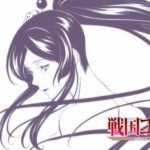








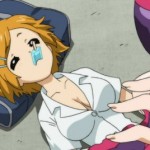







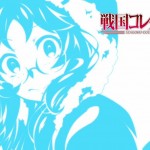



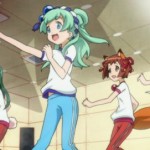




Sadly, this show wasn’t DUB!